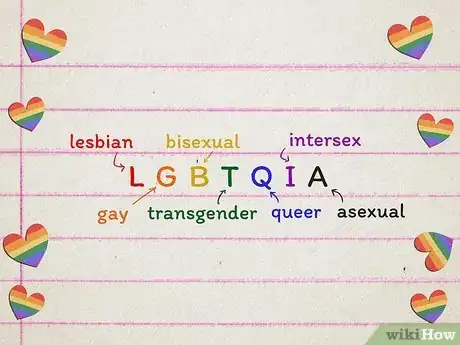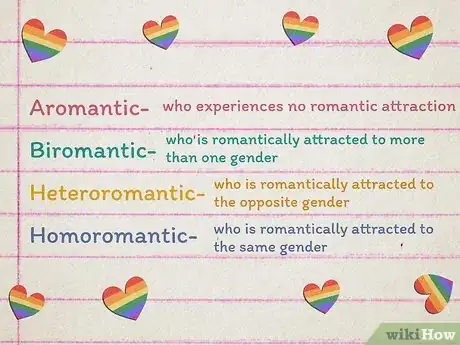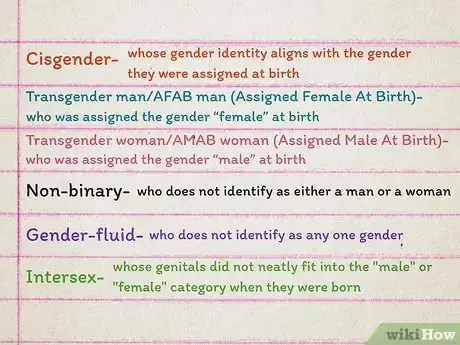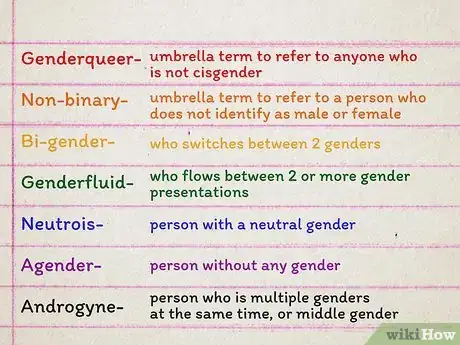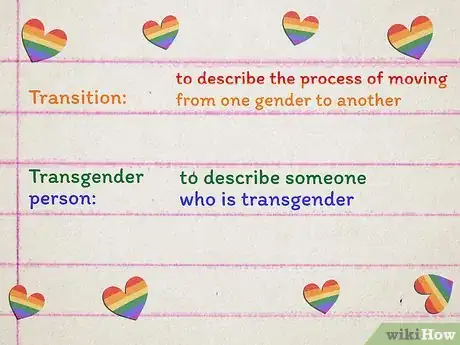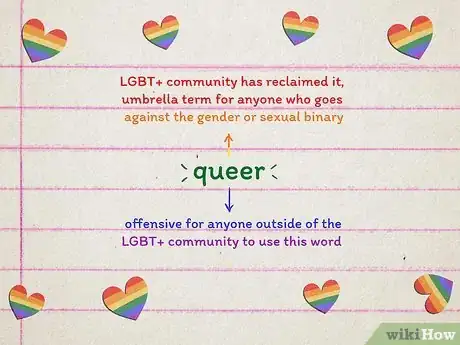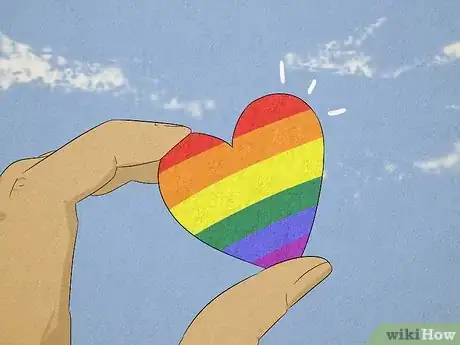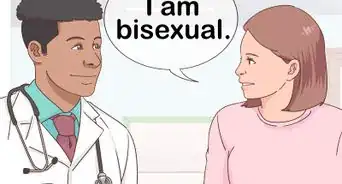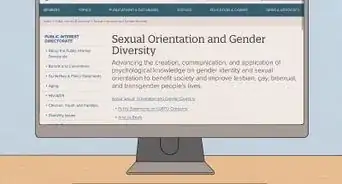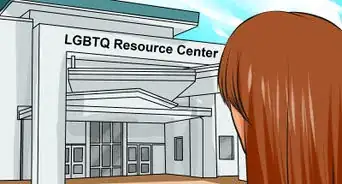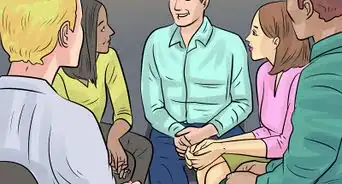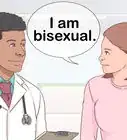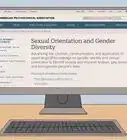This article was co-authored by Deb Schneider, LCSW, PPSC and by wikiHow staff writer, Hannah Madden. Deb Schneider is a Licensed Clinical Social Worker in private practice in Oakland, CA, and a Program Manager for the Weiland Health Initiative at Stanford University. With over 15 years of experience, she specializes in creating safe spaces, respectful of marginalized identities, at the high school and college levels. Deb holds a Bachelor’s degree in Sociology and Women's Studies from Clark University and a Master of Social Work (MSW) with Health Concentration from the University of California, Berkeley School of Social Welfare.
wikiHow marks an article as reader-approved once it receives enough positive feedback. In this case, several readers have written to tell us that this article was helpful to them, earning it our reader-approved status.
This article has been viewed 223,718 times.
Millions of people around the world identify as members of the LGBT+ community. As with any group, they have their own language and terms they use to define themselves and others, which can be a little tough to keep up with. If you’d like to be an ally or you’re a member of the LGBT+ community yourself, understanding the terminology can be really helpful.
Here are ten tips to help you better understand LGBT+ terminology.
Steps
Community Q&A
-
QuestionWhat are some things you can do when questioning your sexuality?
 wikiHow Staff EditorThis answer was written by one of our trained team of researchers who validated it for accuracy and comprehensiveness.
wikiHow Staff EditorThis answer was written by one of our trained team of researchers who validated it for accuracy and comprehensiveness.
Staff Answer wikiHow Staff EditorStaff AnswerTry not to focus too much on assigning yourself a label. When you're questioning, it can feel like you need to figure out what you are right away. However, that can really limit your experiences and box you in unnecessarily. You have all the time in the world to figure out who and what you are, so don't put any pressure on yourself.
wikiHow Staff EditorStaff AnswerTry not to focus too much on assigning yourself a label. When you're questioning, it can feel like you need to figure out what you are right away. However, that can really limit your experiences and box you in unnecessarily. You have all the time in the world to figure out who and what you are, so don't put any pressure on yourself. -
QuestionI don't like men romantically or sexually, but I still find them attractive. I do like women, though. What am I?
 wikiHow Staff EditorThis answer was written by one of our trained team of researchers who validated it for accuracy and comprehensiveness.
wikiHow Staff EditorThis answer was written by one of our trained team of researchers who validated it for accuracy and comprehensiveness.
Staff Answer wikiHow Staff EditorStaff AnswerYou can appreciate that someone is attractive without being sexually or romantically attracted to them. If you are romantically and sexually attracted to women, then you probably only want to date women. Pick out the label that suits you best, and don't be afraid to explore new labels if you want to!
wikiHow Staff EditorStaff AnswerYou can appreciate that someone is attractive without being sexually or romantically attracted to them. If you are romantically and sexually attracted to women, then you probably only want to date women. Pick out the label that suits you best, and don't be afraid to explore new labels if you want to! -
QuestionI'm a woman and I'm attracted to other women, but also to people who are trans, non-binary, etc., but not men. Do you know what that would be called?
 wikiHow Staff EditorThis answer was written by one of our trained team of researchers who validated it for accuracy and comprehensiveness.
wikiHow Staff EditorThis answer was written by one of our trained team of researchers who validated it for accuracy and comprehensiveness.
Staff Answer wikiHow Staff EditorStaff AnswerTechnically, that would fall under the umbrella of "lesbian." Some people define lesbian as "a non-man attracted to non-men." If you are a woman who is not attracted to men, then you would probably be comfortable identifying as a lesbian. Try it out and see how it feels, and don't be afraid to switch up your labels if you need to.
wikiHow Staff EditorStaff AnswerTechnically, that would fall under the umbrella of "lesbian." Some people define lesbian as "a non-man attracted to non-men." If you are a woman who is not attracted to men, then you would probably be comfortable identifying as a lesbian. Try it out and see how it feels, and don't be afraid to switch up your labels if you need to.
References
- ↑ https://pflag.org/glossary
- ↑ https://www.hrc.org/resources/glossary-of-terms
- ↑ https://www.nytimes.com/2014/03/23/fashion/gays-lesbians-the-term-homosexual.html
- ↑ Deb Schneider, LCSW, PPSC. Licensed Clinical Social Worker. Expert Interview. 2 April 2021.
- ↑ Deb Schneider, LCSW, PPSC. Licensed Clinical Social Worker. Expert Interview. 2 April 2021.
- ↑ https://pflag.org/glossary
- ↑ https://www.glaad.org/sites/default/files/allys-guide-to-terminology_1.pdf
- ↑ https://lgbtqia.ucdavis.edu/educated/glossary
- ↑ https://www.hrc.org/resources/glossary-of-terms
- ↑ https://www.glaad.org/sites/default/files/allys-guide-to-terminology_1.pdf
- ↑ https://www.glaad.org/sites/default/files/allys-guide-to-terminology_1.pdf
- ↑ Deb Schneider, LCSW, PPSC. Licensed Clinical Social Worker. Expert Interview. 2 April 2021.
